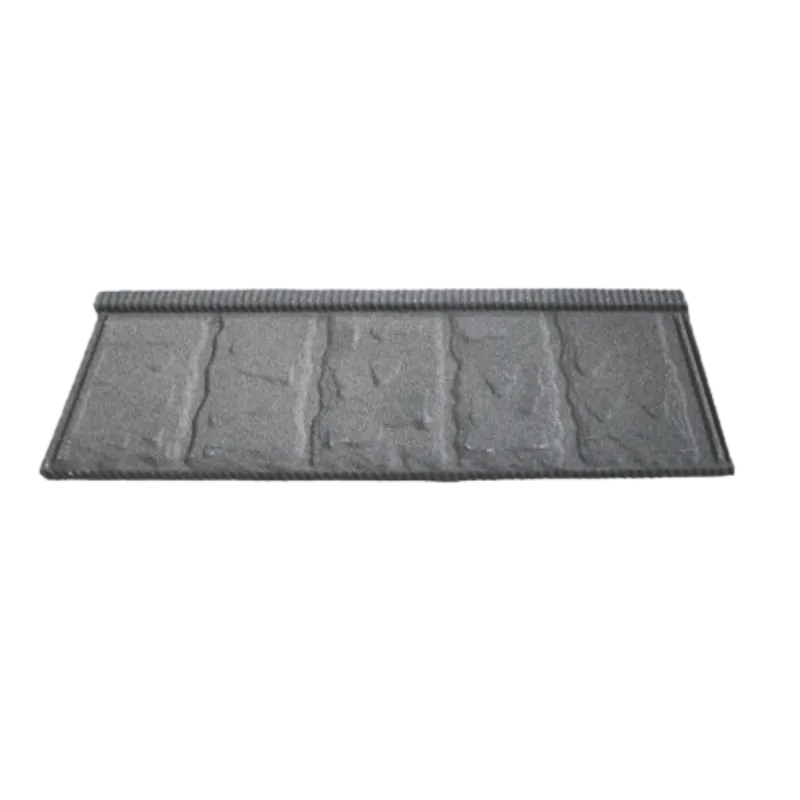
снеж . 29, 2024 09:42 Back to list
roman clay roof tiles
The Significance of Roman Clay Roof Tiles
Roman clay roof tiles are not only an architectural feature but also a testament to the technological and artistic advancements of ancient Rome. These tiles, known as tegulae and imbrices, were fundamental in the construction of buildings that have stood the test of time, influencing architectural practices for centuries. This article explores the production, design, historical context, and legacy of Roman clay roof tiles.
Historical Context
The use of clay roof tiles in ancient Rome dates back to the 3rd century BCE, during a period when the civilization began transitioning from predominantly timber structures to more durable materials. The influence of Greek architecture, especially in terms of form and function, played a crucial role in the adoption of tiles. The Romans innovated upon existing methods, developing their unique designs that better suited their climatic and aesthetic needs.
The practicality of clay tiles cannot be overstated. They provided a waterproof roofing solution, which was particularly important given the diverse climatic conditions across the Roman Empire. In regions with heavy rainfall or extreme heat, clay tiles helped regulate temperature and moisture levels within buildings, contributing to a more comfortable living environment.
Production Techniques
The production of Roman clay roof tiles involved several stages, from sourcing high-quality clay to firing the tiles in specially designed kilns. The Romans mastered the art of tile-making, utilizing techniques that allowed for mass production while maintaining artistic quality. The process typically began with molding clay into the desired shapes the flat tegula for the main roofing section and the curved imbrices to cover the joints. Once shaped, the tiles were sun-dried and then fired at high temperatures to enhance their durability.
The craftsmanship involved in making these tiles was impressive. Many tiles were embossed with intricate designs or manufacturer marks, which served both decorative and functional purposes. Such markings often indicated the origin of the tiles or the workshop from which they came, allowing archaeologists to trace the distribution and trade of these materials throughout the empire.
roman clay roof tiles

Architectural Significance
The architectural significance of Roman clay roof tiles extends beyond mere functionality. They are indicative of the Roman commitment to urban planning and the creation of public spaces that were both practical and aesthetically appealing. The uniformity of tile size and shape contributed to the overall structural integrity of buildings, while the potential for decorative embellishments allowed architects to express personal styles and regional characteristics.
In ancient Roman cities, such as Pompeii and Herculaneum, well-preserved examples of roof tiles provide invaluable insights into the architectural practices of the time. The roofs often featured intricate patterns that not only strengthened the structure but also added to its visual appeal. This blending of form and function is a hallmark of Roman architecture, setting a standard that later cultures would strive to emulate.
Legacy and Modern Applications
The influence of Roman clay roof tiles can be seen in contemporary architecture. Many modern roofing techniques and materials are inspired by these ancient tiles, reflecting a continuous appreciation for their design and functionality. Today, architects often replicate the terracotta aesthetics to achieve a rustic yet timeless look in residential and commercial structures.
Furthermore, the preservation and study of Roman clay roof tiles offer insights into ancient trade networks, economic conditions, and cultural exchanges within the vast territories of the Roman Empire. Archaeological excavations frequently uncover tiles, providing clues about the daily lives of the Romans and their building practices.
In conclusion, Roman clay roof tiles represent more than just a construction material; they embody the ingenuity, artistry, and cultural significance of ancient Rome. Their durability, practicality, and aesthetic appeal continue to inspire modern architecture, ensuring that the legacy of these ancient tiles endures through the ages. The history embedded in each tile serves as a reminder of the sophisticated architectural advancements of a civilization that shaped much of the Western world.
-
Small Clay Roof Tiles for Durable & Stylish Roofing Red & Custom Options Available
NewsJun.24,2025
-
Lifetime Roof Shingles – Durable Roofing Solutions for Decades
NewsJun.10,2025
-
Top Roofing Shingles Types Compare Different Types of Architectural Roofing Shingles for Your Home
NewsJun.10,2025
-
Affordable Asphalt Shingle Roll Durable & Easy Flat Roof Solution
NewsJun.09,2025
-
Metal Asphalt Look Roofing Durable Shingle-Style Options
NewsJun.09,2025
-
Premium Clay Valley Roof Tiles Durable & Eco-Friendly
NewsJun.09,2025







